As the latest and largest of the U.S. Department of Agriculture’s (USDA) Higher Blends Infrastructure Incentive Program (HBIIP) draws to a close, ACE's market development efforts return — or more accurately, we’re re-emphasizing our “do the math' approach to helping prospective higher blend retailers understand ethanol’s value proposition.
While we're congratulating ourselves on getting fuel station owners to accept three-quarters of a billion government dollars to install higher ethanol blend infrastructure, I'd guess most of us hoped all that cash would result in a lot more E15 or E85 locations than what we've seen to date. That’s not to say HBIIP hasn’t done what it’s supposed to do, but where retailers have added E15 with the help of HBIIP, competitors have not responded by also offering E15.
There are multiple reasons other retailers haven’t jumped on the E15 bandwagon, not the least of which is the lack of a law making year-round E15 legal, permanently. The main reason is the one ACE has emphasized all the way back to the original BIP and REAP before that: Single store and small chain retailers must be the primary target for these types of programs, because small retailers don’t respond to large competitors adding new products the way larger chains respond when small stores offer new products, threatening the big guys’ market share. Small operators are used to not having some of what their well-heeled competitors have, usually assuming the big chains have “special" products because it takes a lot of money to add them.
The most successful E15 and flex fuel retailers have “done the math” and understand the market advantage and profit potential of higher ethanol blends. They know whether they can use their existing equipment for E15, and they know what we know — ethanol costs less than gasoline (especially with RINs included), competitors with E10 can’t match E15, and even when E15 is offered as the “fighting grade” fuel at the pump, the retailer can often make better margins on higher ethanol blends. State incentives rewarding retailers who sell higher blends improve the math and drive new volume further.
E10 went nationwide in short order after we taught retailers the ethanol math including the fuel tax credit for blending ethanol and gasoline. Assuming we can get its year-round policy corrected, E15 should take off just as quickly. While we’d all like retailers and consumers to love ethanol because it helps pay for new equipment, benefits the environment and rural economic development, or any of the other reasons ethanol is so loveable, we need to be okay with being loved for our money — or, more accurately, the money we can make or save those station owners and customers when they sell higher ethanol blends. In the fuel world, that’s the love that lasts.



